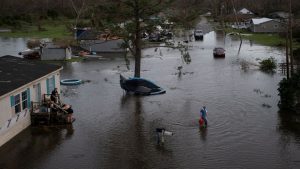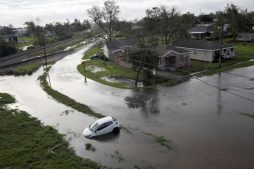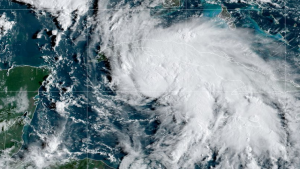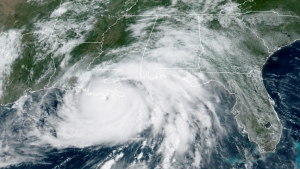Hurricane Barry was churning off Louisiana on Saturday (July 13), poised to make landfall as the first Atlantic hurricane of 2019 in a westward shift that appeared to spare low-lying New Orleans from the massive flooding feared earlier this week.
The National Hurricane Center, which said Barry had became a hurricane with maximum sustained winds of 75 miles per hour (120 kph) on Saturday morning, added the storm was likely to weaken within 24 to 36 hours.
In Mobile, Alabama, rain was coming down hard, flooding roads and impeding traffic. Meanwhile in Plaquemines Parish, Louisiana, winds picked up. Some residents tried to squeeze in some last-minute fun on airboats while other raced to evacuate cattle.
The storm could still bring dangerous flooding and storm surge to coastal regions southwest of New Orleans and to Baton Rouge and Lafayette.
But the threat of major flooding from the historically high Mississippi River topping levees appeared to have passed.
Predictions for when the center of the storm would make landfall were pushed back from sunrise to late morning or early afternoon as Barry crawled across the Gulf Coast at about 3 mph, forecasters with the National Hurricane Center said.
The “lopsided” nature of the storm meant most of the rain was expected after landfall and its slow speed increased the risk of flooding, the weather service said.
Life-threatening, significant flash flooding and river flooding will become increasingly likely later on Saturday and overnight, especially across portions of south-central and southeast Louisiana into Mississippi, forecasters said.
Author
-
Multimedia Manager at SABC News · Wits - University of the Witwatersrand






